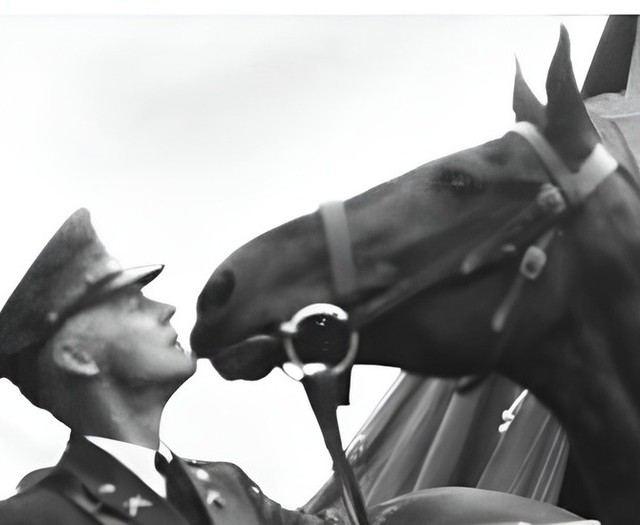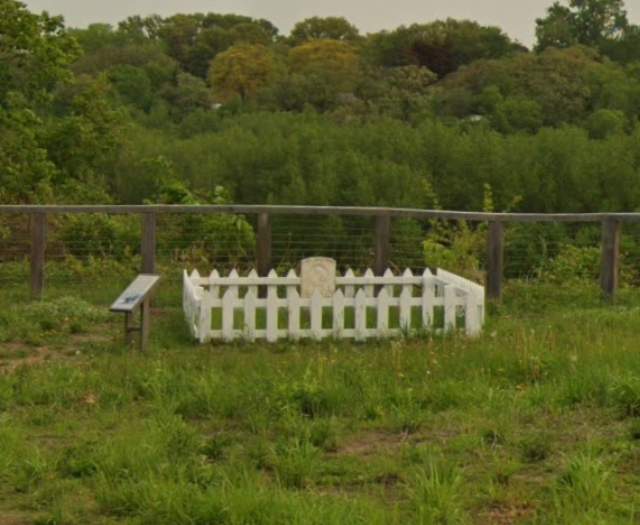Around the same time, Lt. William Hazelrigg arrived at the fort for a five-year assignment. An experienced rider, he saw potential in the unwanted horse and chose him as his mount. Quickly recognizing Whiskey's intelligence, Hazelrigg began training him. Soon, the pair were mainstays on local polo and exhibition circuits.
Named for his distinctive gait, Whiskey had longer back legs than front, creating a unique, almost drunken-looking walk. Despite this, his jumping was exceptional. Whiskey quickly became a fantastic jumper, winning more blue ribbons and prizes than any horse in the US Army.
Hazelrigg and Whiskey became inseparable, and the horse would do anything his trainer asked. His incredible feats included jumping a six-foot-high flame hurdle, clearing a team of mules in a running jump, and even walking down the steps of the fort's mess hall. He could jump over a table with eight people dining without disturbing them. After each astonishing performance, the horse would bow to the cheering crowd.
In April 1926, the US Army sent Lt. Hazelrigg and his family to the Philippines for a two-year assignment. He requested to bring his beloved mount, but Army officials denied the request because of quarantine rules. If the horse went to the Philippines, he wouldn't be allowed back into the United States. Hazelrigg departed for Manila, leaving his partner behind at Fort Snelling.
Many believed Whiskey would only respond to Hazelrigg, effectively ending his exhibition career. However, after sulking briefly following his trainer's departure, the resilient horse partnered with Mrs. Walter O'Brien, the wife of a Fort Snelling captain. Soon, he was back in the spotlight, performing as brilliantly as ever.
Local newspapers reported in December 1927 that Lt. Hazelrigg would soon return to the United States. Many believed he would be reunited with Whiskey. Hazelrigg had left believing he could buy the horse upon his return, but Army regulations had changed. The Army deemed Whiskey too valuable to sell. When Hazelrigg visited in October 1928, the two performed tricks before a teary-eyed audience.
In August 1929, Captain O’Brien received orders to transfer to Honolulu. Mrs. O’Brien accompanied her husband. Once again, Whiskey was separated from someone close to him. Captain Raymond T. Seymour became his primary rider.
Hazelrigg, now a captain in the US Army, was never entirely out of Whiskey’s life. Over the years, his travels occasionally found him back at Fort Snelling — if only for a short visit. As soon as he was able, he’d seek out Whiskey to say hello. No matter the time apart, the horse always perked up when he heard his first trainer’s low whistle. The two old friends never forgot each other.
At twenty-five, Whiskey retired to the fort's old cavalry stables in August 1936. He enjoyed his retirement, spending his days frolicking in the fields and playing with other horses and mules. While he performed a few times over the next seven years, retirement was his primary focus.
Hazelrigg, now a colonel, visited Whiskey in September 1943. Despite their long separation, their affection remained strong. Whiskey nuzzled his former trainer, and they shared a heartfelt moment that Hazelrigg later described as a "confidential talk." Sadly, it was their final visit.
Whiskey passed away on December 30, 1943, at the age of thirty-two. On New Year's Day, at 11:30 AM, he was buried with full military honors near his longtime grazing pasture. The death of this award-winning horse marked the end of an era when horses were a significant part of the US Army.
During the construction of Highway 55 in the 1960s, Whiskey's grave was relocated near the Bishop Whipple Federal Building on the fort grounds. However, this wasn't the end of his relocations. In 2002, the Hiawatha light rail line was built near Whiskey's burial site. Due to construction, his remains were moved once again. On June 14, 2002, Whiskey was reburied near the picnic grounds of Fort Snelling, with onlookers and descendants of his former trainer present. His gravestone, surrounded by a white picket fence, read:
"Whiskey, a great horse; a stout heart."
 Minnesota Then
Minnesota Then


